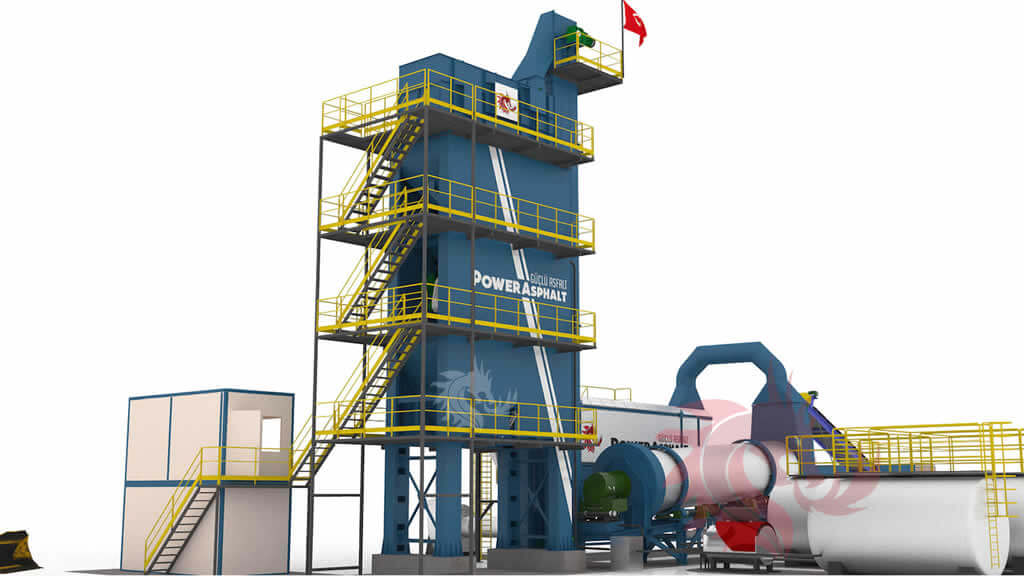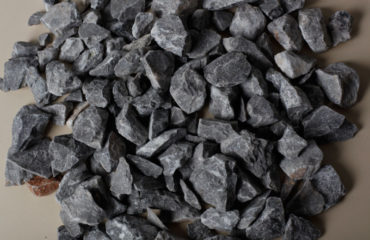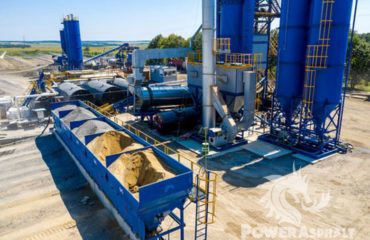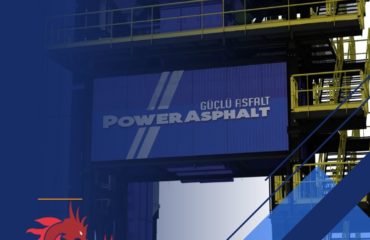
Batch Asphalt Plant
Stationary (Batch) Asphalt Plants; Aggregate stored in the plant area in different fractions in asphalt production is taken from the stocks and fed to separate cold feeding silos. The clearance of the covers under each silo and the speed of the conveyor belt are adjusted from the control cabinet. It is carried to the dryer with the help of belts. Thanks to the burner placed at the end of the dryer, the aggregate loses its humidity. The burner temperature must be at least 185°C in order for the aggregate humidity ratio to be appropriate If the temperature of the burner is less than 185°C, the aggregate can’t be dehumidified. In case of high aggregate moisture, asphalt durability and quality are adversely affected. For drying and heating purposes, fuel-oil or natural gas is generally used as fuel in the burner.
After the aggregate comes out of the dryer, it is directed to the elevators. It is transferred to the screen unit at the top of the production tower. The screens separate the aggregate according to their size and collect them in separate bunkers under the screen. The first screen is a protective layer that prevents excessive coarse aggregate from entering the bunkers. This screen is followed by two or three screens that go from top to bottom, decreasing in size. Dimensions of these screens; It depends on the plant and the gradation of the mixture to be made. The screens are designed in such a way that the fines are transferred to the first hot bunker and the coarse grains are transferred to the other bunkers. In order for the aggregate to be screened correctly, the screen surface must be proportional to the amount of aggregate. The capacity of the screen should also be proportional to the capacity of the dryer and mixer.
There are hot bunkers for all sizes under the screens to store the heated and screened aggregates of different sizes with minimum heat loss. In terms of continuity of production, when the mixer starts to work, there should be sufficient well-sifted aggregate in the bunkers. In each bunker, there are indicators indicating that the aggregate has fallen below or exceeded a certain level. After sifting, the aggregate stored in hot bunkers is weighed to add to the mixture.
After sifting, the aggregate stored in hot bunkers is weighed to add to the mixture. First, coarse aggregates are taken, followed by medium and fine aggregate. Finally, the filler carried by the filler elevator enter the mixture after being weighed in the filler weighing. The reason for this sorting is to prevent fine material from leaking through the cover. The last material left will fill the gaps in the coarse aggregate mixture.
After weighing enough amount of aggregate, filler and bitumen for the mixture, it is discharged to the mixer located under the weighing bunker. The time elapsed from opening the cover of the bunkers to opening the cover of the mixer is called mixing time. The mixing time should be long enough for the aggregate to be dispersed uniformly and completely covered with bitumen.
After the materials are mixed in the mixer, the covers are opened and poured into the dump truck and taken to the laying area.


 Français
Français  Русский
Русский  العربية
العربية  Türkçe
Türkçe 

